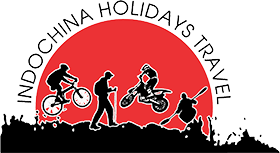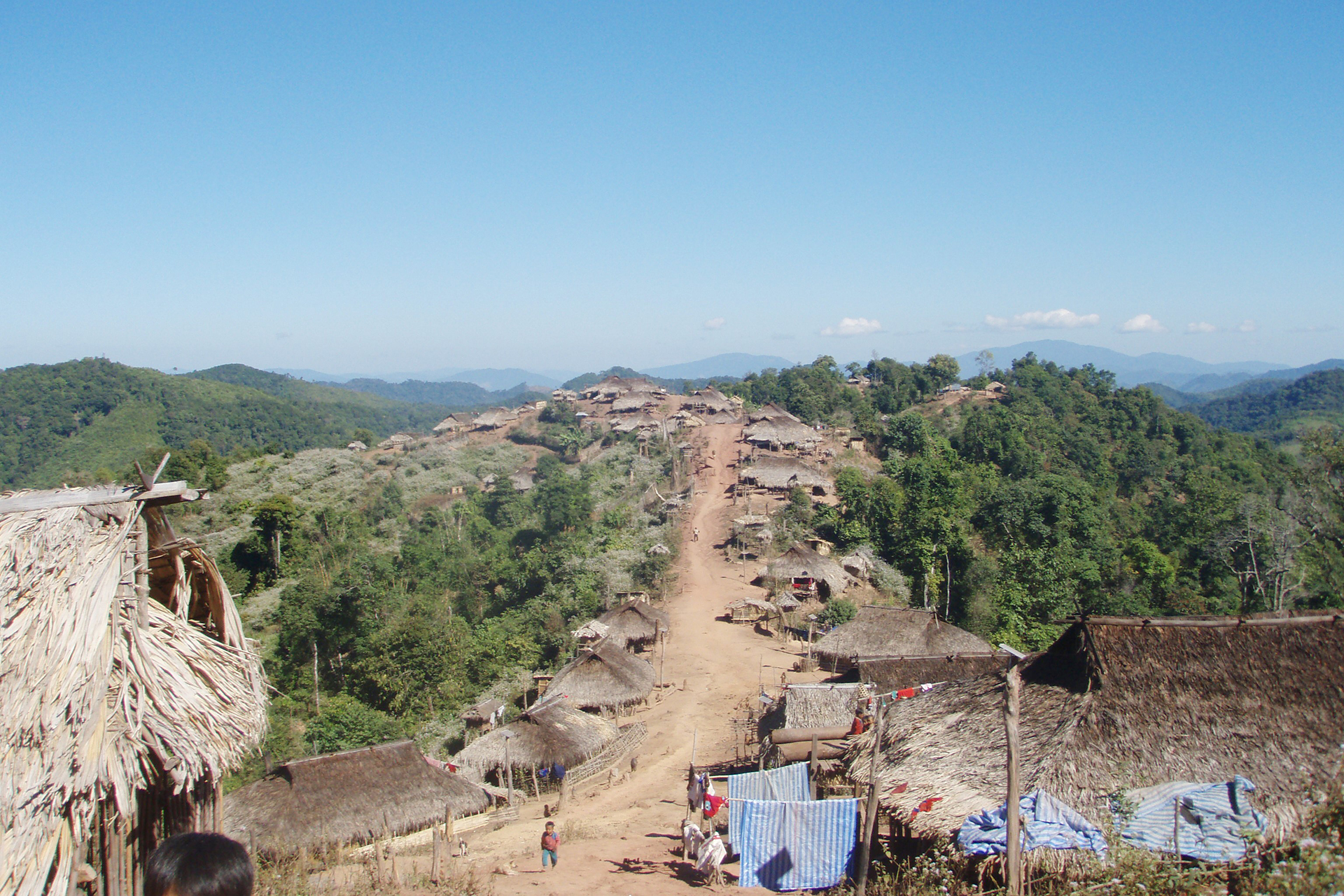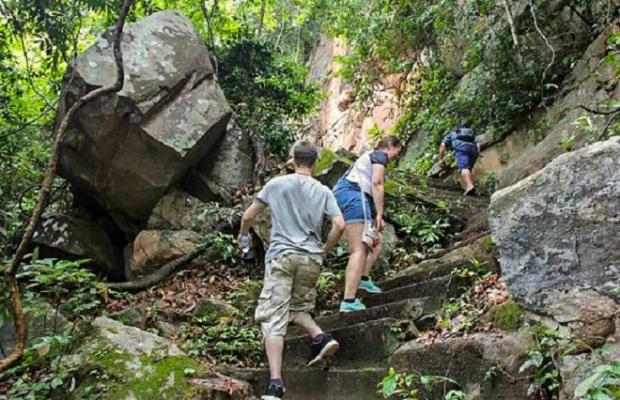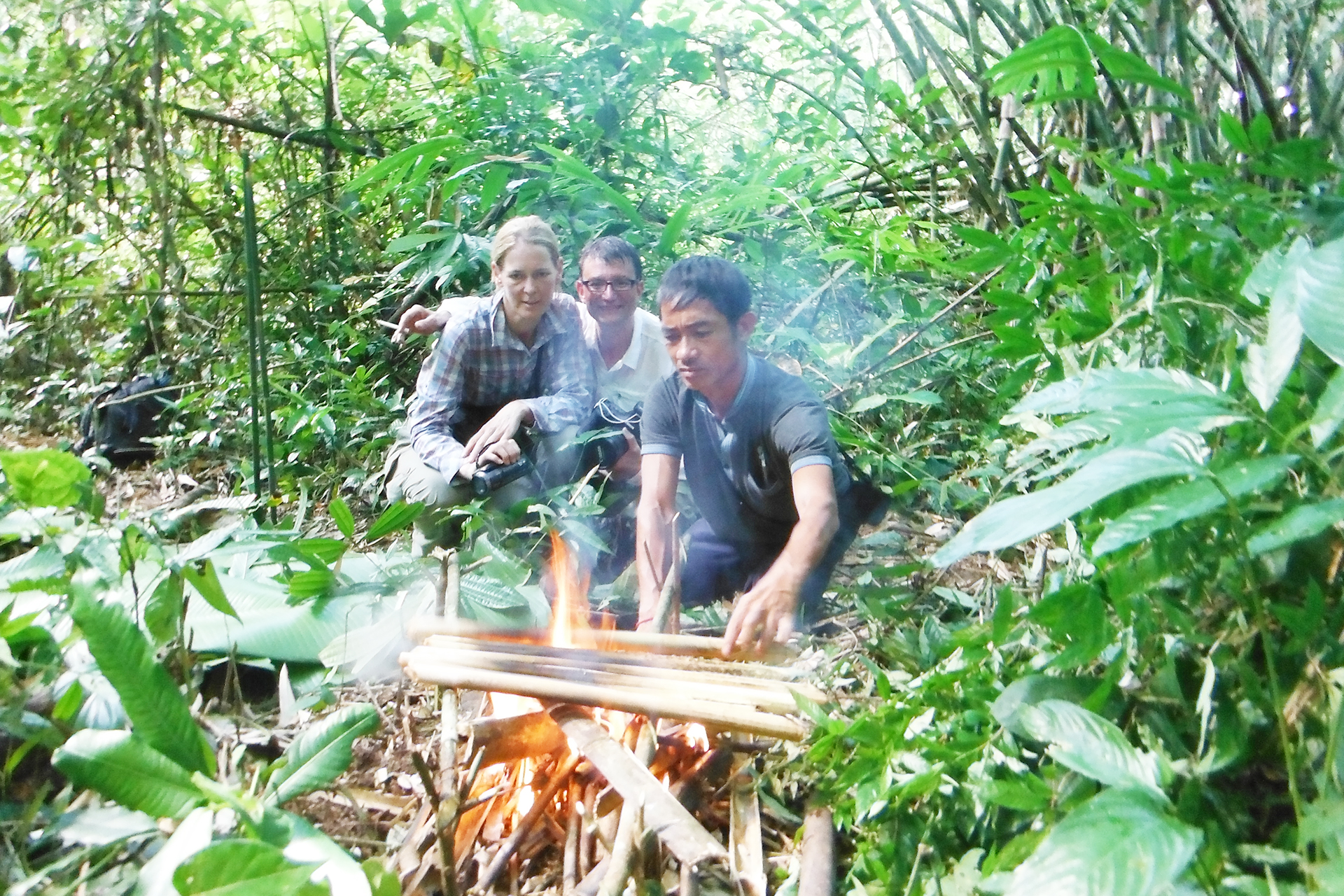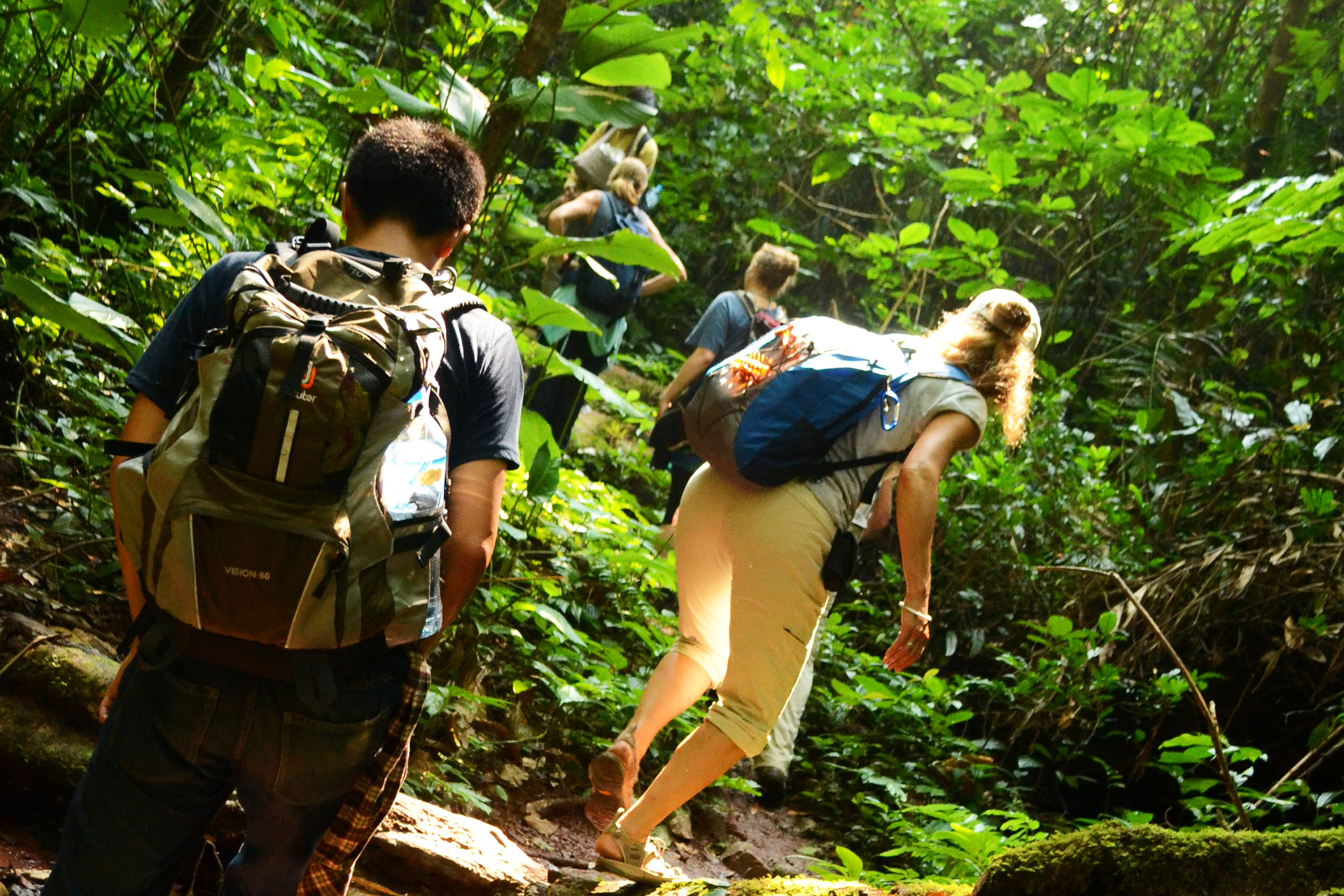Pu Luong just might be our favourite trekking destination in all of Vietnam. Less well-known than Mai Chau yet just as beautiful, this is a landscape of rippling rice terraces, corn and cassava fields, bamboo waterwheels and the thatched villages of Thai and Hmong minorities. From Hang, it’s around six hours of challenging hiking to reach Pu Luong, half on dirt paths and half on old, unpaved French roads. You’re not roughing it here, with two nights at a boutique eco retreat, so you’re sure to be rested and raring to go for a full day of guided trekking in this truly idyllic region. Get ready for steep climbs, stream crossings, river rafting and chance encounters with locals!
Day 6 : Pu Luang - Crossing border to Laos - Sam Neua
It’s time to leave Vietnam behind and cross the border into Laos, where your first overnight stop will be the town of Sam Neua. You’ll break up the car journey in Vieng Xai, where the mountains are riddled with a honeycomb of limestone caves. During the Vietnam War, 20,000 people sheltered from illegal US bombing raids in these caves, building a “hidden city” complete with schools, markets, hospitals, a radio station, and communist headquarters. Your guide will tell you all about what life was like in the caves before you continue on to Sam Neua – a remote town whose rather unpicturesque veneer belies a certain distinctive charm and thoroughly un-touristy vibe.
Day 7 - 8 : Nam Et-Phou Louey - Nam Nern
It’s a two-hour drive through gorgeous mountain landscapes to the jungles of Nam Et-Phou Louey, where you’ll begin your adventures at a Khmu minority village. Here, jump in a longtail boat and head downstream on the Nam Nern River, keeping an eye out for monitor lizards and birds as you go. With two nights in the jungle, you’ll stay at a Lao-style bungalow and a local guesthouse, and spend your days hiking to salt licks, cruising on the river, chatting to your guides about Khmu culture, and learning about the local wildlife (including rarely-sighted tigers). A highlight is sure to be the night safari, where you might spot otters, loris, porcupines or owls under cover of darknes
Day 9 : Nam Et-Phou Louey
Your next trek begins at the Khmu village of Nam Poung, where you’ll jump in a tok-tok (two-wheeled tractor) and ride through corn fields and rice paddies to a local farmer’s hut. Fuel up with a picnic lunch before continuing on foot, spotting medicinal plants, animal tracks and exotic birds as you go. After four hours’ walking through the jungle, arrive at camp: a cluster of cosy, spherical baskets hanging from the trees. There’s just time to splash in the river and tuck into an early dinner before it’s off again to the Poung Nied Salt Lick, where sambar, civets, bears and dhole come out to feed after dusk. If you’re lucky, you’ll spot some from the watchtower as you wait quietly above.
Day 10 - 11 : Nong Khiaw
Return to the salt lick early this morning to look for animal tracks and check the camera traps for nocturnal visitors. Then, after breakfast, head back to Nam Poung village the way you came, for the five-hour drive to Muang Ngoi. This red-roofed village is spread along the banks of the chocolate-coloured Nam Ou, with lush and lofty mountains rising steeply on either side. The best way to see the region is from the water, so you’ll be exploring by longtail boat and kayak, stopping to hike to caves, villages, and waterfalls hidden in the jungle. Back in town, you’ll be staying in comfort at a riverside lodge, rounding off your evenings with dinner and drinks overlooking sunset on the river.
Day 12 -14 : Luang Prabang
With no more hiking left to do, there’s nothing for it but to relax — and Luang Prabang is the place to do it. Recognised by UNESCO for its unique blend of traditional Lao architecture and French Colonial style, this laid-back riverside town is the kind of place you could easily stay forever. After you’ve toured its glittering wats and magnificent Royal Palace, then cruised on the Mekong with a sundowner in hand, head out into the jungle for one last adventure: the MandaLao elephant camp. Here, rescued elephants live out their days in peace and quiet. Visitors can feed them and walk with them through the jungle — but never ride them.
Please consider the environment before printing
